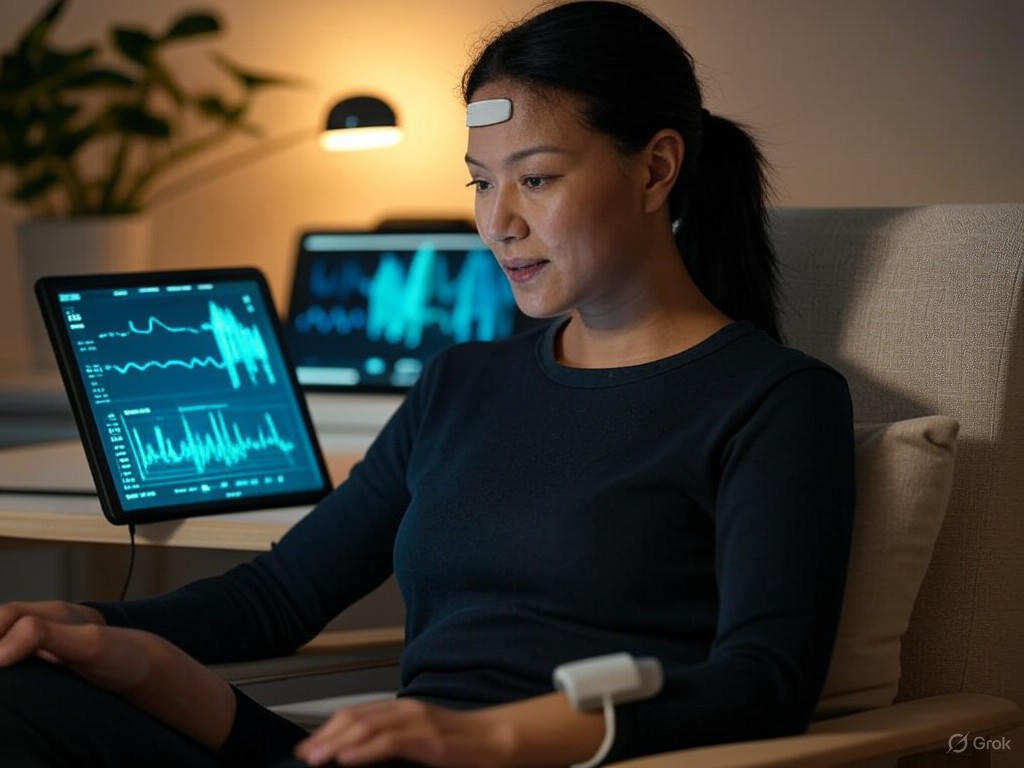Biofeedback Therapy: Mental Wellness Tools
In an era where the demands of daily life—from bustling careers to the relentless pace of technology—leave many feeling overwhelmed, the pursuit of mental health has never been more critical. Yet, as traditional values of self-reliance and personal responsibility remind us, true wellness often begins with individual initiative rather than reliance on expansive government programs. Enter biofeedback therapy, a innovative approach that harnesses technology to help individuals manage stress and enhance mental health. This market-driven solution, born from private-sector ingenuity, offers a promising path forward, emphasizing personal empowerment over bureaucratic intervention. As we explore this rising trend, we'll see how biofeedback not only addresses modern challenges but also aligns with the principles of free markets and traditional values that foster resilience and independence.
Understanding Biofeedback: A Tool for Self-Mastery
Biofeedback therapy represents a fascinating intersection of technology and wellness, empowering users to gain real-time insight into their body's responses to stress. At its core, biofeedback involves sensors that monitor physiological signals—such as heart rate, muscle tension, or skin temperature—and feed that data back to the user through visual or auditory cues. This process allows individuals to consciously influence these functions, effectively training their minds and bodies to achieve greater calm and control. Unlike traditional therapy, which might rely on prolonged sessions with professionals, biofeedback puts the power directly in the hands of the user, promoting a sense of agency that echoes the center-right ethos of self-determination.
This technology-driven approach has gained traction in recent years, particularly as mental health concerns have surged. According to the American Psychological Association, stress levels among adults have remained elevated since the pandemic, with many seeking accessible tools to cope American Psychological Association. Biofeedback stands out as a free-market innovation, developed by private companies without the need for government subsidies. Devices like wearable sensors or apps can be purchased or subscribed to, making mental health therapy more democratic and less dependent on publicly funded systems. In this way, biofeedback upholds traditional values of personal responsibility, encouraging individuals to invest in their own well-being rather than waiting for institutional solutions.
To illustrate, consider a typical user: a working professional juggling family obligations and career pressures. Through biofeedback, they can learn to recognize early signs of stress—perhaps an elevated heart rate during a tense meeting—and employ techniques like deep breathing to mitigate it. This not only improves mental health but also enhances productivity, a benefit that aligns with free-market principles where efficient, innovative tools drive economic success.

A professional uses a biofeedback wearable to monitor heart rate variability, demonstrating how technology aids in real-time stress reduction and personal wellness.
The Analysis: Biofeedback in the Context of Modern Challenges
The rise of biofeedback therapy must be viewed against the backdrop of evolving social trends, where mental health has become a focal point of public discourse. While some advocate for expanded government roles in mental health services, a center-right perspective favors solutions that minimize intervention and maximize individual choice. Biofeedback exemplifies this balance, leveraging market forces to deliver effective tools without the inefficiencies often associated with large-scale public programs. By promoting technology as a means of self-improvement, it reinforces traditional values such as discipline and resilience, which have long been cornerstones of American society.
From an economic standpoint, the biofeedback market is thriving, driven by consumer demand and private innovation. A report from the Wall Street Journal highlights how wellness technologies, including biofeedback devices, have seen exponential growth, with the global market projected to reach $10 billion by 2025 Wall Street Journal. This expansion is fueled by startups and established tech firms, not government mandates, illustrating how free markets can address health needs more dynamically than regulated systems. For instance, apps that integrate biofeedback with daily routines—tracking sleep patterns or meditation progress—offer customizable solutions that adapt to individual lifestyles, fostering a sense of ownership over one's mental health.
Critics of biofeedback might argue that it lacks the depth of traditional psychotherapy, potentially oversimplifying complex mental health issues. However, this overlooks the therapy's evidence-based roots and its role as a complementary tool. Research from IEEE Spectrum underscores biofeedback's efficacy, noting that it can reduce symptoms of anxiety and stress by up to 50% in controlled studies, particularly when combined with lifestyle changes IEEE Spectrum. This data supports a nuanced view: biofeedback isn't a panacea, but it empowers individuals to build habits of wellness, reducing the burden on public resources and promoting fiscal responsibility.
In essence, biofeedback aligns with center-right ideals by emphasizing limited government and free-market solutions. Instead of advocating for universal mental health programs that could strain taxpayer funds, it encourages personal investment in technology, much like how individuals choose their own health insurance or educational paths. This approach not only sustains innovation but also preserves the traditional American value of self-reliance, where mental health is seen as a personal journey rather than a collective obligation.
Evidence and Real-World Impact: A Closer Look
The evidence supporting biofeedback's role in mental health is robust, drawing from a variety of credible sources. A study published in the Journal of Medical Internet Research found that biofeedback technology significantly improves stress management, with participants reporting enhanced emotional regulation after just a few weeks of use Journal of Medical Internet Research. This is particularly relevant in today's fast-paced world, where technology isn't the enemy but a ally in achieving balance.
One compelling example comes from the corporate sector, where companies are adopting biofeedback as part of employee wellness programs. A blog from Harvard Business Review details how firms like Google have integrated biofeedback tools to boost productivity and reduce burnout, leading to measurable improvements in employee retention Harvard Business Review. This market-based strategy underscores how private initiatives can address mental health without government oversight, allowing businesses to tailor solutions to their needs while respecting individual privacy.
Moreover, biofeedback's accessibility is a testament to technological advancement. Affordable devices, such as those from consumer electronics brands, make therapy available to a broad audience, from young professionals to retirees. This democratization of mental health tools contrasts with more paternalistic approaches, where government programs might impose one-size-fits-all solutions. As an industry blog from Psychology Today notes, the integration of biofeedback with everyday technology—like smartphones—has made wellness more proactive and less reliant on clinical settings Psychology Today.

A line graph illustrating reduced stress markers over time with biofeedback therapy, highlighting its practical benefits for everyday mental health management.
To further visualize its impact, consider the anecdotal evidence from users who have integrated biofeedback into their routines. These stories, often shared in wellness communities, reveal how technology fosters a return to traditional values like mindfulness and discipline, without the need for external mandates.
Conclusion: Charting a Path Forward with Personal Empowerment
As we reflect on the rise of biofeedback therapy, it's clear that this innovation holds immense potential for improving mental health in a way that honors individual freedom and market-driven progress. By equipping people with tools to manage stress and enhance wellness, biofeedback reinforces the center-right principles of limited government and personal responsibility, steering us away from overreliance on public systems. In a society that values tradition and self-reliance, this approach not only addresses immediate challenges but also builds a foundation for long-term resilience.
Ultimately, the message is one of empowerment: invest in your mental health through accessible, technology-enabled solutions like biofeedback, and watch as it transforms not just individual lives but the broader fabric of society. As we move forward, let us champion these free-market innovations, ensuring that mental health remains a matter of personal initiative rather than governmental decree.

